What's New
Displaying results 2741 - 2750 of 4052
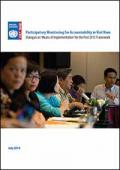
Resource | Publications,
The results of Viet Nam’s national consultations on post-2015 contributed to the global report "A Million Voices" and informed several key reports, such as the Secretary-General's High-Level Panel, the Sustainable Development Solutions Network, the Secretary-General’s recent report on the MDGs and the Post-2015 Agenda "A Life of Dignity for All".
Since then, Viet Nam has remained actively engaged in the global post-2015 process. For the second round of national consultations on the implementation of the Post-2015 Agenda, the UN Country Team selected "participatory monitoring for accountability" of the six issues agreed at the global level3. This issue was considered critical for the successful implementation of the next development goal agenda in Viet Nam.
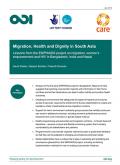
Resource | Publications,
The EMPHASIS project (Enhancing Mobile Populations’ Access to HIV and AIDS Services, Information and Support) has provided a diverse range of services to cross-border migrants in India, Nepal and Bangladesh over the past five years.
This report explores the project and the lessons it offers for both implementation and outcomes. It focuses, in particular, on women’s empowerment and safe migration, as these are the two areas that emerged as cross-cutting themes that had a major impact on the agency of women who were, in turn, catalysts for change over the five years of the project.
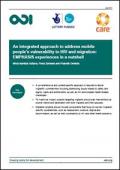
Resource | Publications,
- A comprehensive and context-specific approach is required to tackle migrants’ vulnerabilities including addressing issues related to safety and dignity, rights and entitlements, as well as HIV and broader health-related challenges.
- To maximise impact, projects targeting migrants should plan interventions at source, transit and destination with both migrants and their spouses.
- Migration projects should include components that focus on women migrants’ specific vulnerabilities, such as harassment, violence, stigma and discrimination, as well as their vulnerability to HIV and other health problems.
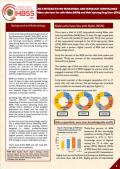
Resource | Fact Sheets,
The objective of the IHBSS is to determine the: (a) prevalence of HIV and syphilis among the key affected populations and establish trend over time, (b) behavioral factors that are associated with STI and HIV transmission and their effect on the HIV epidemic in the country, (c) outcome of STI and HIV intervention programs and (d) to provide strategic information to guide STI and HIV policies, programs and services.
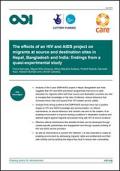
Resource | Publications,
While mobility itself is not seen as vulnerability factor for HIV infection, the unsafe conditions under which people migrate exposes them to a greater risk of infection. Not only do policies and programmes in receiving or host countries hinder migrants from accessing health and social services, but cultural factors and their legal status may contribute to the discrimination they face and act as a further barrier to accessing services. Difficult working conditions, loneliness and feelings of powerlessness, together with peer pressure, may lead migrants to engage in risky sexual behaviours that leave them vulnerable to HIV and AIDS.
Similarly, those left at home may also face loneliness and exclusion. They may engage in risky behaviours for livelihood and survival purposes – particularly if the hoped-for remittances from migrants do not materialise – and can also be exposed to HIV infection by returning spouses or partners who may not be aware of their own HIV infection.
This briefing focuses on the situation across three South Asian countries, Nepal, Bangladesh and India.
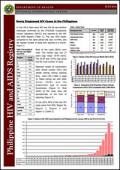
Resource | Fact Sheets,
In July 2014, there were 585 new HIV Ab sero-positive individuals confirmed by the STD/AIDS Cooperative Central Laboratory (SACCL) and reported to the HIV and AIDS Registry (Table 1). This was 30% higher compared to the same period last year (n=449), and the highest number of cases ever reported in a month.
Most of the cases (96%) were male. The median age was 27 years (age range: 16-69 years). The 20-29 year (55%) age group had the most number of cases.
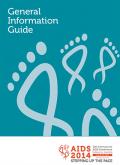
Resource | Publications,
AIDS 2014 will bring together leading scientists, public health experts, policy makers and the HIV-affected community to translate recent momentous scientific advances into action that will address means to end the epidemic within the current context of significant global economic challenges.








